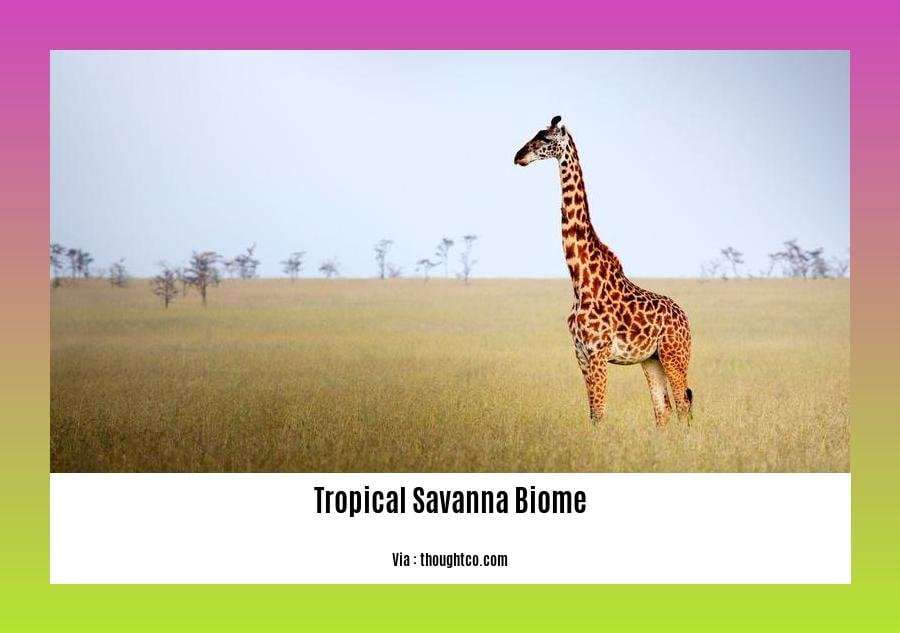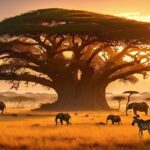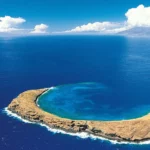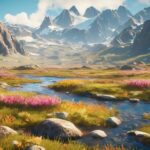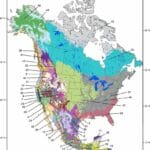Step into a world where nature’s canvas comes alive – the tropical savanna. Imagine a vast, grassy ocean adorned with towering tree islands, where wildlife roams in harmony. Join us as we unveil the secrets of this captivating biome, where sun-drenched landscapes dance with a rhythm of life that will leave you spellbound.
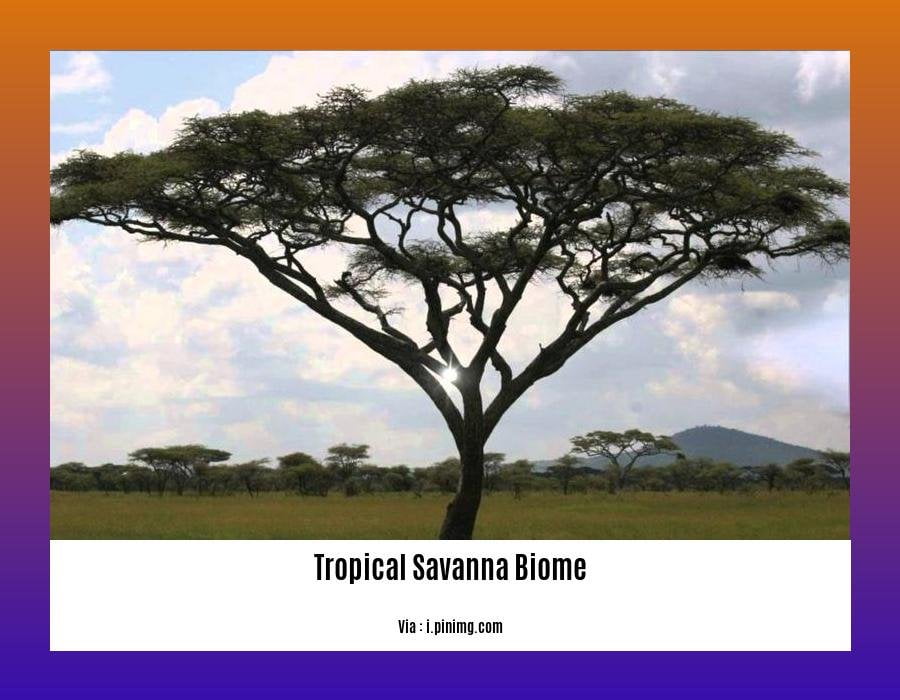
Facts About the Tropical Savanna Biome
Picture a wide-open landscape, painted with tall grasses that sway in the breeze. Scattered across this golden canvas are lone trees, casting cool shadows on the ground. This is the tropical savanna, a place where sunshine rules and life dances to the rhythm of the seasons.
Let’s dive into some cool facts about this awesome biome:
- A Land of Two Extremes: Imagine if your year was split into two completely different parts. That’s what life is like in the savanna – it’s all about the dramatic shift from wet to dry seasons. When the rains come, it’s like someone hit the “refresh” button. Lush green grasses sprout, trees burst into colorful blooms, and the whole place comes alive. But then comes the dry season, and the landscape transforms into a sea of golden grasses, with the sun baking the earth. This cycle totally shapes how plants and animals live their lives in the savanna.
- A Wildlife Paradise: If you’re a wildlife enthusiast, the savanna is like a dream come true! It’s home to some of the most iconic animals on the planet. Think majestic elephants lumbering across the plains, graceful gazelles leaping through the tall grasses, and powerful lions stalking their prey. And let’s not forget the zebras, giraffes, cheetahs, and so many more! These amazing creatures have adapted to thrive in the savanna’s unique challenges, from droughts to wildfires.
- Plant Power: Savanna plants are tough cookies! They’ve developed some pretty incredible ways to survive the long dry spells. Imagine having roots that dig deep into the earth, searching for hidden sources of water. Or picture yourself with thick, leathery leaves that act like shields, protecting precious moisture from the scorching sun. And then there are the trees, like the acacia with its intimidating thorns – they’ve got their defenses ready for any hungry herbivores.
- Climate Heroes: You know how important it is to protect our planet, right? Well, savannas are playing a crucial role in the fight against climate change. These vast grasslands act like giant sponges, soaking up carbon dioxide from the atmosphere and storing it away. This helps to regulate our planet’s temperature – pretty cool, right?
- Human Connection: For centuries, people have lived in harmony with the savanna, respecting its rhythms and relying on its bounty. Indigenous communities have developed sustainable ways of life, carefully managing resources and coexisting with the wildlife. They hold a deep understanding of this unique ecosystem, passed down through generations of traditional knowledge.
- Tiny Architects, Big Impact: Don’t underestimate the power of the small! Termites might seem insignificant, but these little creatures are like the architects of the savanna. Their intricate mounds, built from soil and saliva, aren’t just homes; they actually help to improve the soil, making it easier for water to seep in and for nutrients to circulate.
- When Fire Brings Life: It might sound strange, but wildfires can actually be a good thing for the savanna. These natural fires, often sparked by lightning, sweep through the grasslands, clearing out dead plants and making way for new growth. It’s like hitting the reset button, keeping the ecosystem healthy and vibrant.
- The Great Migration: Ever wondered where those incredible wildlife documentaries get their footage of massive animal herds on the move? Many of them are filmed in the savanna during the great migrations. As the dry season tightens its grip, herbivores like zebras and wildebeest embark on epic journeys in search of fresh grazing lands. And you can bet predators like lions and hyenas are never too far behind!
- Protecting a Fragile Paradise: Savannas are facing increasing threats from human activities, such as deforestation and unsustainable agriculture. As we learn more about these incredible ecosystems, it becomes even more crucial to protect them for future generations.
Water pollution is a serious global issue that is affecting our planet’s ecosystems. Discover five shocking facts about water pollution and learn how we can take action to prevent it. Read more
Marine biology is a fascinating field that dives deep into the secrets of the ocean. Immerse yourself in the world of marine life with these mind-boggling facts of marine biology. Read more
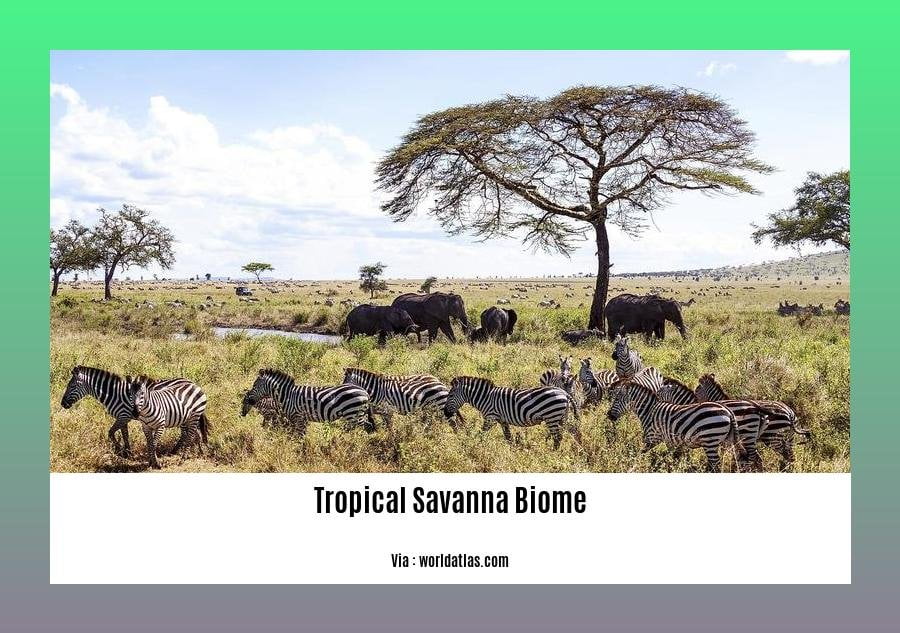
5 Facts About the Savanna Biome
Okay, so we’ve already dipped our toes into the world of savannas, but let’s dive a little deeper and uncover some more fascinating tidbits about these amazing places, shall we?
Fact 1: Savannas Aren’t Just an African Thing
You’re probably picturing those classic African landscapes with giraffes and elephants, right? And yeah, Africa is definitely where many people think of when they hear “savanna.” But here’s the thing: savannas are actually found on multiple continents! We’re talking South America, Australia, even parts of Asia. Each one is like its own little world, with its own unique mix of plants and animals that have adapted to that specific environment.
Fact 2: It’s a Whole Cycle of Life and Death Out There
Savannas are all about change. They have these distinct wet and dry seasons, and that really drives everything that happens there. It’s like the whole ecosystem is on this wild roller coaster ride! When the rains come, everything bursts to life, but then things dry out, and it’s a test of survival. This constant back and forth has led to some incredible adaptations. I mean, think about how some animals can go super long periods without water – that’s impressive!
Fact 3: The Animals, Oh My, The Animals!
Okay, let’s be real, the wildlife is a HUGE part of what makes savannas so captivating. And the African savannas? Forget about it! It’s like stepping right into a nature documentary. You’ve got your massive herds of zebras and wildebeests roaming around, always on the lookout for predators like lions and cheetahs. And let’s not forget the elephants – those gentle giants are awe-inspiring to see in person. It’s this whole intricate web of relationships between hunters and the hunted, all playing out on this grand stage.
Fact 4: Don’t Underestimate the Power of Fire (and Poor Soil)
Now, here’s something you might not expect: savanna soil isn’t exactly the richest stuff out there. It’s actually pretty low in nutrients. But here’s the wild part: wildfires, which might seem destructive, are actually super important for these ecosystems. They clear out old, dead plant matter, and their ash actually helps return some nutrients to the soil. Plus, some plants have actually evolved to depend on these fires to help them germinate and spread their seeds. Talk about a fiery life cycle!
Fact 5: Baobab Trees: They’re Not Just Big, They’re Ancient!
You can’t talk about African savannas without mentioning baobab trees. I mean, have you ever seen pictures of these things? They look like they were plucked straight out of a fairytale! These giants can live for thousands of years, and their massive trunks can store incredible amounts of water – essential for surviving those long dry spells. Plus, their fruit is a vital food source for a bunch of animals, and even humans have been using them for centuries for food and medicine.
3 Interesting Facts About the Tropical Grassland Savanna
We’ve already talked a bit about what makes the tropical grassland savanna so special, but let’s dive into some seriously cool facts about this incredible ecosystem. Trust me, you’re going to want to know these!
1. The Savanna’s All-Star Animal Cast
If you’re a fan of amazing animals, the savanna is the place to be. Picture this: majestic elephants roaming around, giraffes munching on treetops, and lions patrolling their territory. And don’t forget about the zebras and cheetahs adding to the excitement! The savanna is like a real-life nature documentary, with all these incredible creatures perfectly adapted to this unique environment. It really makes you appreciate the delicate balance of nature and how everything is connected.
2. Wildfires: Not Always a Bad Thing
We usually think of wildfires as destructive forces, but in the savanna, they’re actually super important for keeping things healthy. Think of it like this: wildfires act like a reset button, clearing out all the dead plants and making room for fresh, new growth. Plus, they help prevent trees and shrubs from taking over the grasslands, which is essential for maintaining the savanna’s wide-open spaces. It’s amazing how nature has its own way of keeping things in check, isn’t it?
3. Termites: The Savanna’s Master Architects
Ever seen pictures of those giant mounds in the savanna? Those are termite mounds, and they’re way more than just piles of dirt. Termites are like the architects of the savanna, and their mounds actually improve the soil and create homes for tons of other creatures. Talk about teamwork! And here’s a fun fact: those mounds also act like landmarks, helping animals navigate the vast savanna landscape. Who knew termites were so important to the ecosystem?
Facts About the Savanna “Desert”
While not technically a desert, the savanna can sometimes feel like one. Let’s explore why:
- A Delicate Balance: Savannas exist in a delicate balance between grasslands and deserts. Factors like rainfall, soil fertility, and human activities all contribute to this balance.
- The Threat of Desertification: Savannas are particularly vulnerable to desertification, a process where fertile land turns into desert. The Sahara Desert, for instance, is expanding southward into the savanna at an alarming rate.
- Human Impact: Activities like overgrazing and unsustainable farming practices can degrade savanna soil, making it more susceptible to desertification.
- Climate Change: Rising temperatures and changes in rainfall patterns associated with climate change are exacerbating the risk of desertification in savannas.
Experiencing the Tropical Savanna
Imagine standing on a vast plain, the sun warm on your skin. Tall grasses sway in a gentle breeze, stretching as far as the eye can see. This is the essence of the tropical savanna: a world of gold and green, shaped by the rhythm of the seasons.
- Two Worlds in One: The savanna experiences distinct wet and dry seasons, each with its own unique character. During the dry season, the landscape takes on a golden hue, with some trees shedding their leaves to conserve water. When the rains arrive, the savanna explodes back to life, a vibrant tapestry of green adorned with colorful wildflowers.
- Adaptations for Survival: Savanna inhabitants are masters of adaptation. Grasses have deep root systems to tap into underground water sources, while trees boast thick bark to withstand wildfires. Animals migrate in search of food and water, their movements shaping the savanna’s dynamic landscape.
- Global Significance: Beyond their beauty, savannas play a critical role in regulating Earth’s climate. They act as massive carbon sinks, absorbing carbon dioxide from the atmosphere and storing it in their soils.
3 Defining Characteristics of Tropical Savannas
What makes a tropical savanna unique? Let’s delve into three defining characteristics:
- The Rhythm of Wet and Dry: Perhaps the most striking feature of tropical savannas is the stark contrast between their wet and dry seasons. This dramatic shift in rainfall shapes the entire ecosystem, influencing everything from plant growth to animal behavior.
- A Tapestry of Grasslands and Trees: Tropical savannas are characterized by a unique blend of grasslands and scattered trees. This balance is crucial, as it provides a diverse range of habitats for a wide array of species.
- The Unseen Hand of the Wind: While rain and sunshine are obvious factors shaping the savanna, the wind also plays a vital role. Trade winds, blowing from east to west, carry moisture from the ocean, influencing the timing and intensity of the wet season.
Fun Facts About the Savanna for Kids
Hey kids, ready for some awesome savanna facts?
- It’s a Wild Party! Imagine a party with zebras in stripy suits, giraffes snacking from the tallest trees, and elephants using their trunks as party horns! That’s what the savanna is like – a wild gathering of amazing animals!
- Speedy Cheetahs and Sneaky Lions! Cheetahs are the fastest land animals, reaching speeds of up to 70 miles per hour! Lions are expert hunters, working together to stalk their prey.
- Why Are Zebras Striped? Those black and white stripes aren’t just for show! They help zebras blend in with the herd, confusing predators.
- Plants with Superpowers! Savanna plants are tough! Some have deep roots to find water, others have thick bark to survive fires, and some even have tiny leaves to save water.
- Savannas Help Our Planet! Savannas are like giant sponges, sucking up bad air and keeping our planet healthy. Plus, they’re home to so many cool animals!
4 Key Characteristics of Savannas
What defines a savanna? Let’s explore four key features:
- Grasslands Meet Trees: Savannas are characterized by vast grasslands interspersed with scattered trees and shrubs, creating a unique mosaic of habitats.
- A Seasonal Rollercoaster: Life on the savanna revolves around distinct wet and dry seasons. Rainfall patterns dictate the availability of food and water, shaping the behavior and adaptations of plants and animals.
- Grazers Galore: Savannas are home to a remarkable diversity of grazing animals, from massive elephants to swift gazelles. These herbivores play a critical role in shaping the landscape and influencing plant life.
- Sun-Kissed Warmth: Savannas are typically warm throughout the year, with abundant sunshine supporting plant growth and fueling the ecosystem’s energy flow.
A Fascinating Fact About Savanna Animals
Did you know that zebras’ stripes aren’t just for camouflage? Scientists believe that the stripes’ different temperatures may create tiny air currents around the zebra’s body, helping to keep it cool in the hot savanna sun. Talk about a stylish way to beat the heat!
Good Things About Savannas
Savannas are truly remarkable ecosystems that offer a wealth of benefits:
- Biodiversity Hotspots: Savannas are teeming with life, from large mammals to tiny insects. They are home to a dazzling array of species, many of which are found nowhere else on Earth.
- Resilient Ecosystems: Savannas have evolved to withstand harsh conditions, including drought, fire, and nutrient-poor soils. They are a testament to nature’s resilience.
- Climate Change Warriors: Savannas play a vital role in mitigating climate change by absorbing and storing significant amounts of carbon dioxide from the atmosphere.
- Culturally Rich: Savannas are entwined with the cultures and livelihoods of people around the world. They hold deep cultural significance and provide essential resources for communities.
- Tourism Treasures: Savannas offer unforgettable wildlife viewing opportunities, attracting tourists and supporting local economies.
Unveiling the Secrets of Savanna Soil
Beneath the savanna’s expansive grasslands lies a hidden world: the soil. Let’s unearth some facts about this vital component of the ecosystem:
- Texture is Key: Savanna soils vary widely in texture, ranging from sandy to clayey. This diversity influences water drainage, nutrient availability, and the types of plants that can thrive.
- Nutrient Recyclers: While often low in nutrients, savanna soils are highly efficient at recycling organic matter. Frequent fires help break down dead plants and animals, releasing nutrients back into the ecosystem.
- Layers Tell a Story: Savanna soils typically have distinct layers, each with its own characteristics. These layers reflect the history of the land, from ancient geological processes to more recent environmental changes.
- Life Finds a Way: Despite nutrient limitations, savanna soils support a surprising diversity of plant and animal life. Specialized adaptations allow organisms to thrive in this unique environment.
Conclusion
From iconic wildlife to resilient ecosystems, savannas are a testament to nature’s ingenuity. As we continue to learn more about these fascinating biomes, it’s our responsibility to protect them for generations to come.
